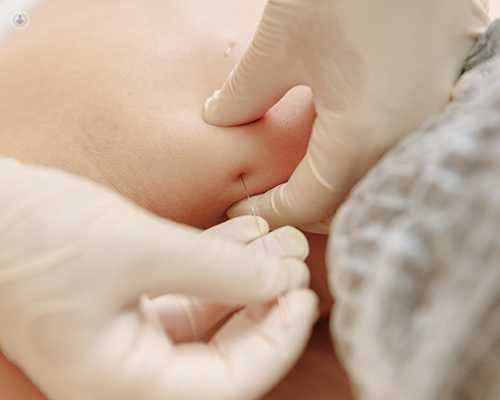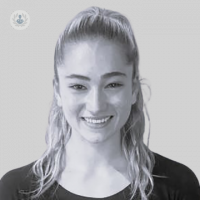What is dry needling?
Escrito por:Dry needling is a technique used in physiotherapy that can help treat a range of musculoskeletal injuries with the help of thin, acupuncture-type needles.
Here to provide an expert insight into dry needling, including how it differs from acupuncture, is Millie Lindsey, leading physiotherapist at Opus Biological.

What is dry needling? How does it differ from acupuncture?
Dry needling is a technique used by healthcare practitioners to help with fascia release and to reduce muscle tension. During treatment, a practitioner inserts a needle into a trigger point (tender points within muscle/fascia) to reduce pain and increase range of motion at a joint.
The main difference between dry needling and acupuncture is the location, that is, where the needles are inserted. Acupuncture involves needles being inserted based on meridians and chi (energy flow), whereas with dry needling, the needle is inserted based on the patient’s trigger points.
How does dry needling work to relieve pain and muscle tension?
Dry needling helps to increase blood flow. This allows the sensitive area to receive more oxygen, and therefore be able to repair tissue and reduce inflammation.
Dry needing can also trigger the brain to release more endorphins, which will help to relieve pain.
What conditions can be treated using dry needling?
Dry needling is a great form of manual therapy to help treat musculoskeletal injuries, such as:
- Low back pain
- Piriformis syndrome
- Tennis elbow
- Achilles tendinopathy
- Rotator cuff injuries
Is dry needling painful?
It depends on the technique. There may be minor pain, but the practitioner will adapt their technique to the patient’s needs.
How is this type of treatment administered? How long is a typical course of treatment?
Dry needling treatment is administered by a qualified practitioner who inserts a needle into a muscle. The needle is only used for a couple of minutes per trigger point. The course of treatment depends on the injury.
Dry needling is a great adjunct to exercise therapy and other forms of manual therapy.
Who is a suitable candidate for dry needling?
A suitable candidate is someone who has musculoskeletal pain.
If you are considering dry needling and you would like to consult your options with an expert, don’t hesitate to book an appointment with Millie Lindsey via her Top Doctors profile today.


